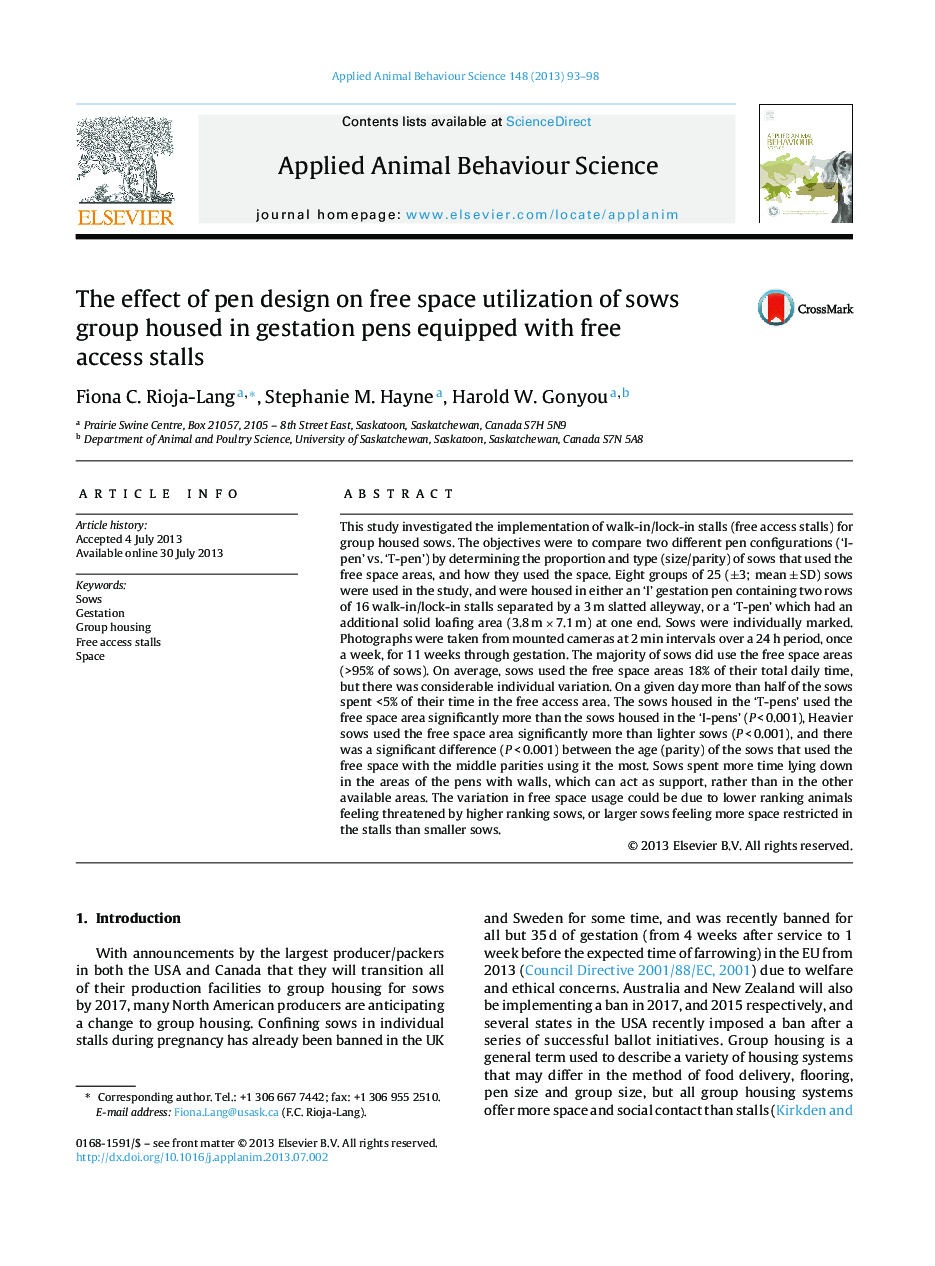| Article ID | Journal | Published Year | Pages | File Type |
|---|---|---|---|---|
| 4522699 | Applied Animal Behaviour Science | 2013 | 6 Pages |
This study investigated the implementation of walk-in/lock-in stalls (free access stalls) for group housed sows. The objectives were to compare two different pen configurations (‘I-pen’ vs. ‘T-pen’) by determining the proportion and type (size/parity) of sows that used the free space areas, and how they used the space. Eight groups of 25 (±3; mean ± SD) sows were used in the study, and were housed in either an ‘I’ gestation pen containing two rows of 16 walk-in/lock-in stalls separated by a 3 m slatted alleyway, or a ‘T-pen’ which had an additional solid loafing area (3.8 m × 7.1 m) at one end. Sows were individually marked. Photographs were taken from mounted cameras at 2 min intervals over a 24 h period, once a week, for 11 weeks through gestation. The majority of sows did use the free space areas (>95% of sows). On average, sows used the free space areas 18% of their total daily time, but there was considerable individual variation. On a given day more than half of the sows spent <5% of their time in the free access area. The sows housed in the ‘T-pens’ used the free space area significantly more than the sows housed in the ‘I-pens’ (P < 0.001), Heavier sows used the free space area significantly more than lighter sows (P < 0.001), and there was a significant difference (P < 0.001) between the age (parity) of the sows that used the free space with the middle parities using it the most. Sows spent more time lying down in the areas of the pens with walls, which can act as support, rather than in the other available areas. The variation in free space usage could be due to lower ranking animals feeling threatened by higher ranking sows, or larger sows feeling more space restricted in the stalls than smaller sows.
